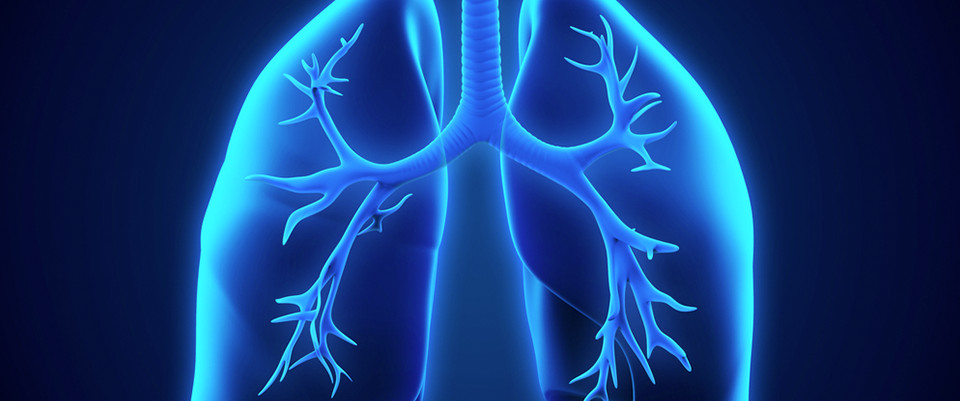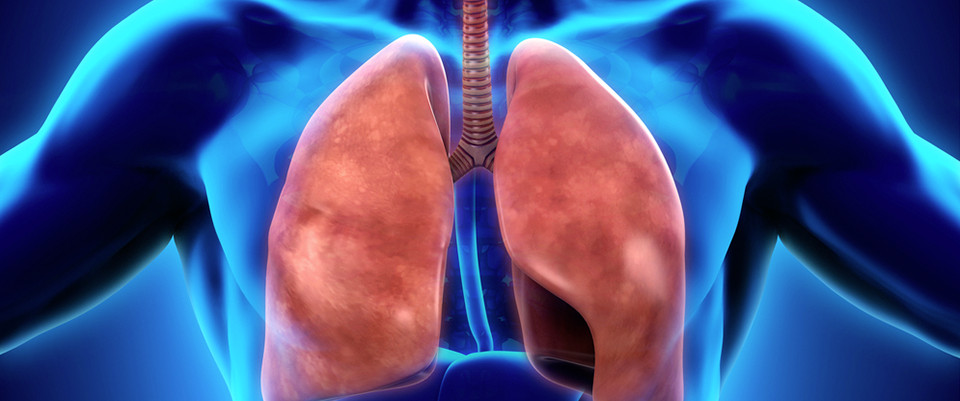PubMed
Pharmacometabolomics Informs About Pharmacokinetic Profile of Methylphenidate.
Related Articles
Pharmacometabolomics Informs About Pharmacokinetic Profile of Methylphenidate.
CPT Pharmacometrics Syst Pharmacol. 2018 Aug;7(8):525-533
Authors: Kaddurah-Daouk R, Hankemeier T, Scholl EH, Baillie R, Harms A, Stage C, Dalhoff KP, Jűrgens G, Taboureau O, Nzabonimpa GS, Motsinger-Reif AA, Thomsen R, Linnet K, Rasmussen HB, INDICES Consortium, Pharmacometabolomics Research Network
Abstract
Carboxylesterase 1 (CES1) metabolizes methylphenidate and other drugs. CES1 gene variation only partially explains pharmacokinetic (PK) variability. Biomarkers predicting the PKs of drugs metabolized by CES1 are needed. We identified lipids in plasma from 44 healthy subjects that correlated with CES1 activity as determined by PK parameters of methylphenidate including a ceramide (q value = 0.001) and a phosphatidylcholine (q value = 0.005). Carriers of the CES1 143E allele had decreased methylphenidate metabolism and altered concentration of this phosphatidylcholine (q value = 0.040) and several high polyunsaturated fatty acid lipids (PUFAs). The half-maximal inhibitory concentration (IC50 ) values of chenodeoxycholate and taurocholate were 13.55 and 19.51 μM, respectively, consistent with a physiological significance. In silico analysis suggested that bile acid inhibition of CES1 involved both binding to the active and superficial sites of the enzyme. We initiated identification of metabolites predicting PKs of drugs metabolized by CES1 and suggest lipids to regulate or be regulated by this enzyme.
PMID: 30169917 [PubMed - in process]
Pluripotent Stem Cells in Developmental Toxicity Testing: A Review of Methodological Advances.
Related Articles
Pluripotent Stem Cells in Developmental Toxicity Testing: A Review of Methodological Advances.
Toxicol Sci. 2018 Sep 01;165(1):31-39
Authors: Luz AL, Tokar EJ
Abstract
Millions of children are born each year with a birth defect. Many of these defects are caused by environmental factors, although the underlying etiology is often unknown. In vivo mammalian models are frequently used to determine if a chemical poses a risk to the developing fetus. However, there are over 80 000 chemicals registered for use in the United States, many of which have undergone little safety testing, necessitating the need for higher-throughput methods to assess developmental toxicity. Pluripotent stem cells (PSCs) are an ideal in vitro model to investigate developmental toxicity as they possess the capacity to differentiate into nearly any cell type in the human body. Indeed, a burst of research has occurred in the field of stem cell toxicology over the past decade, which has resulted in numerous methodological advances that utilize both mouse and human PSCs, as well as cutting-edge technology in the fields of metabolomics, transcriptomics, transgenics, and high-throughput imaging. Here, we review the wide array of approaches used to detect developmental toxicants, suggest areas for further research, and highlight critical aspects of stem cell biology that should be considered when utilizing PSCs in developmental toxicity testing.
PMID: 30169765 [PubMed - in process]
Application of NMR metabolomics to search for human disease biomarkers in blood.
Related Articles
Application of NMR metabolomics to search for human disease biomarkers in blood.
Clin Chem Lab Med. 2018 Aug 31;:
Authors: Song Z, Wang H, Yin X, Deng P, Jiang W
PMID: 30169327 [PubMed - as supplied by publisher]
Untargeted metabolomics-like screening approach for chemical characterization and differentiation of canopic jar and mummy samples from Ancient Egypt using GC-high resolution MS.
Related Articles
Untargeted metabolomics-like screening approach for chemical characterization and differentiation of canopic jar and mummy samples from Ancient Egypt using GC-high resolution MS.
Analyst. 2018 Aug 31;:
Authors: Brockbals L, Habicht M, Hajdas I, Galassi FM, Rühli FJ, Kraemer T
Abstract
In Ancient Egypt it was common practice to embalm corpses and specific internal organs to ensure eternal life. The exact nature of the employed embalming fluids, particularly for organ preservation within the canopic jars, is debated. Therefore, the aim of the current study, was to chemically characterize and differentiate canopic jars (n = 28) and mummies (n = 6) using gas chromatography - high resolution mass spectrometry (GC-HR MS) with a new untargeted metabolomics-like screening approach; as part of a larger minimal-invasive transdisciplinary study on Ancient Egyptian human tissues. Post-analytical data processing included deconvolution, screening against the NIST 14 spectral database as well as a high resolution metabolomics library, and positive peak evaluation. In the majority of samples the presence of a coniferous resin was indicated by the detection of longiborneol in combination with abietadiene acid derivatives and guajacol. Beeswax, proposedly used for symbolic reasons and/or as a binding agent, was detected in 10 samples. Previously not mentioned in the literature, but identified in the current sample set, were medical-related substances like aniseed constituents, salicylic acid, chamazulene and jacobine. By applying an untargeted metabolomics-like approach to archaeological samples for the first time, extensive statistical analysis was made possible (using both identified and non-identified features; adding up to 4381 features), which showed significant differences in the overall chemical composition of canopic jar and mummy samples using principle component analysis (PCA) and partial least square-discriminant analysis (PLS-DA). This emphasizes the necessity for more extensive canopic jar studies in the future in order to interpret findings correctly.
PMID: 30168542 [PubMed - as supplied by publisher]
Metabolomics of tracheal wash samples and exhaled breath condensates in healthy horses and horses affected by equine asthma.
Related Articles
Metabolomics of tracheal wash samples and exhaled breath condensates in healthy horses and horses affected by equine asthma.
J Breath Res. 2018 Aug 31;:
Authors: Bazzano M, Laghi L, Zhu C, Magi GE, Serri E, Spaterna A, Tesei B, Laus F
Abstract
The present work characterized the metabolomic profile of tracheal wash (TW) and exhaled breath condensate (EBC) in healthy horses and horses with respiratory disease. Six asthma-affected horses (Group A) and six healthy controls (Group H) underwent clinical, endoscopic and cytologic examinations of upper airways to confirm the active phase of asthma. TW and EBC samples were collected from each animal and investigated by Proton Nuclear magnetic resonance (1H-NMR) metabolomic analysis. A total of 10 out of 38 metabolites found in TW were significantly different between groups (p< 0.05). Higher concentrations of histamine and oxidant agents like glutamate, valine, leucine and isoleucine, as well as lower levels of ascorbate, methylamine, dimethylamine and O-phosphocholine were found in Group A compared to Group H. Eight metabolites were found in equine EBC, namely methanol, ethanol, formate, trimethylamine, acetone, acetate, lactate and butanone, previously observed also in human EBC. Despite this was a pilot study, the results showed that metabolomic analysis of TW and EBC has the potentiality to serve as a basis for diagnostic tools in horses with asthma.
PMID: 30168442 [PubMed - as supplied by publisher]
Vasculitis research: Current trends and future perspectives.
Related Articles
Vasculitis research: Current trends and future perspectives.
Int J Rheum Dis. 2018 Aug 30;:
Authors: Misra DP, Naidu GSRSNK, Agarwal V, Sharma A
Abstract
We discuss recent and prospective research in small and large vessel vasculitis. Large cohorts of Takayasu arteritis (TA) have been recently published from across the world, clarifying our understanding of this uncommon disease. Novel open-ended approaches like large-scale genotyping, proteomics and metabolomics have helped gain novel insights into TA, giant cell arteritis (GCA) and anti-neutrophil cytoplasmic antibody-associated vasculitis (AAV). Recent advances in the imaging of TA and GCA offer promise for earlier diagnosis and better monitoring of response to therapy. Although two randomized controlled trials of abatacept and tocilizumab failed to meet their primary end-points, successful large-scale studies of abatacept and tocilizumab in GCA hold promise for better disease control. While cyclophosphamide has revolutionized the management of AAV, increasing use of rituximab as an alternative induction regimen, as well as use of novel approaches involving reduced or no corticosteroid use for AAV and alternative agents such as avacopan (a complement 5a receptor antagonist) hold promise for lesser toxic induction regimens in the future. Increasingly, the risk of cardiovascular events and comorbidities such as osteoporosis are being recognized as factors affecting long-term prospects of patients with vasculitis. There is a shift in emphasis to utilize patient-reported outcomes to more accurately gauge the impact of vasculitides and their treatment.
PMID: 30168260 [PubMed - as supplied by publisher]
From genomics to metabolomics: emerging metastatic biomarkers in osteosarcoma.
Related Articles
From genomics to metabolomics: emerging metastatic biomarkers in osteosarcoma.
Cancer Metastasis Rev. 2018 Aug 31;:
Authors: Dean DC, Shen S, Hornicek FJ, Duan Z
Abstract
Although the investigation into biomarkers specific for pulmonary metastasis within osteosarcoma (OS) has recently expanded, their usage within the clinic remains sparse. The current screening protocol after any OS diagnosis includes a chest CT scan; however, metastatic lung nodules frequently go undetected and remain the primary cause of death in OS. Recently, screening technologies such as liquid biopsy and next-generation sequencing have revealed a promising array of biomarkers with predictive and diagnostic value for the pulmonary metastasis associated with OS. These biomarkers draw from genomics, transcriptomics, epigenetics, and metabolomics. When assessed in concert, their utility is most promising as OS is a highly heterogeneous cancer. Accordingly, there has been an expansion of clinical trials not only aimed at further demonstrating the significance of these individual biomarkers but to also reveal which therapies resolve the pulmonary metastasis once detected. This review will focus on the recently discovered and novel metastatic biomarkers within OS, their molecular and cellular mechanisms, the expansion of humanized OS mouse models amenable to their testing, and the associated clinical trials aimed at managing the metastatic phase of OS.
PMID: 30167827 [PubMed - as supplied by publisher]
Chemometric Analysis of Cannabinoids: Chemotaxonomy and Domestication Syndrome.
Related Articles
Chemometric Analysis of Cannabinoids: Chemotaxonomy and Domestication Syndrome.
Sci Rep. 2018 Aug 30;8(1):13090
Authors: Mudge EM, Murch SJ, Brown PN
Abstract
Cannabis is an interesting domesticated crop with a long history of cultivation and use. Strains have been selected through informal breeding programs with undisclosed parentage and criteria. The term "strain" refers to minor morphological differences and grower branding rather than distinct cultivated varieties. We hypothesized that strains sold by different licensed producers are chemotaxonomically indistinguishable and that the commercial practice of identifying strains by the ratio of total THC and CBD is insufficient to account for the reported human health outcomes. We used targeted metabolomics to analyze 11 known cannabinoids and an untargeted metabolomics approach to identify 21 unknown cannabinoids. Five clusters of chemotaxonomically indistinguishable strains were identified from the 33 commercial products. Only 3 of the clusters produce CBDA in significant quantities while the other 2 clusters redirect metabolic resources toward the THCA production pathways. Six unknown metabolites were unique to CBD-rich strains and/or correlated to CBDA and 3 unknowns were found only in THC-rich strains. Together, these data indicate the domestication of the cannabis germplasm has resulted in a loss of the CBDA pathway in some strains and reallocation of resources between CBDA and THCA pathways in others. The impact of domestication is a lack of chemical diversity and loss of biodiversity in modern cannabis strains.
PMID: 30166613 [PubMed - in process]
Characterization of bacteria and yeasts isolated from traditional fermentation starter (Fen-Daqu) through a 1H NMR-based metabolomics approach.
Related Articles
Characterization of bacteria and yeasts isolated from traditional fermentation starter (Fen-Daqu) through a 1H NMR-based metabolomics approach.
Food Microbiol. 2018 Dec;76:11-20
Authors: Li RY, Zheng XW, Zhang X, Yan Z, Wang XY, Han BZ
Abstract
Daqu is a traditional fermentation starter for the production of baijiu and vinegar. It is an important saccharifying and fermenting agent associated with alcoholic fermentation and also a determining factor for the flavour development of these products. Bacterial and yeast isolates from a traditional fermentation starter (Fen-Daqu) were examined for their amylolytic activity, ethanol tolerance and metabolite production during sorghum-based laboratory-scale alcoholic fermentation. The selected strains (Bacillus licheniformis, Pediococcus pentosaceus, Lactobacillus plantarum, Pichia kudriavzevii, Wickerhamomyces anomalus, Saccharomyces cerevisiae, and Saccharomycopsis fibuligera) were blended in different combinations, omitting one particular strain in each mixture. 1H nuclear magnetic resonance (NMR) spectroscopy coupled with multivariate statistical analysis was used to investigate the influence of the selected strains on the metabolic changes observed under the different laboratory-controlled fermentation conditions. Principal component analysis showed differences in the metabolites produced by different mixtures of pure cultures. S. cerevisiae was found to be superior to other species with respect to ethanol production. S. fibuligera and B. licheniformis converted starch or polysaccharides to soluble sugars. Lactic acid bacteria had high amylolytic and proteolytic activities, thereby contributing to increased saccharification and protein degradation. W. anomalus was found to have a positive effect on the flavour of the Daqu-derived product. This study highlights the specific functions of S. cerevisiae, S. fibuligera, B. licheniformis, W. anomalus and lactic acid bacteria in the production of light-flavour baijiu (fen-jiu). Our results show that all investigated species deliver an important contribution to the functionality of the fermentation starter Daqu.
PMID: 30166130 [PubMed - in process]
UPLC-QTOF MS-Based Serum Metabolomic Profiling Analysis Reveals the Molecular Perturbations Underlying Uremic Pruritus.
Related Articles
UPLC-QTOF MS-Based Serum Metabolomic Profiling Analysis Reveals the Molecular Perturbations Underlying Uremic Pruritus.
Biomed Res Int. 2018;2018:4351674
Authors: Wu Q, Zhang H, Ding JR, Hong ZY, Wu H, Zhu ZY, Guo ZY, Chai YF
Abstract
As one of the most troublesome complications in patients with chronic renal disease, the etiology of uremic pruritus remains unknown, and the current therapeutic approaches are limited and unsatisfactory. To identify potential biomarkers for improving diagnosis and treatment and obtain a better understanding of the pathogenesis of uremic pruritus, we compared serum metabolome profiles of severe uremic pruritus (HUP) patients with mild uremic pruritus (LUP) patients using ultraperformance liquid chromatography-quadruple time-of-flight mass spectrometry (UPLC-QTOF MS). Partial least squares discriminant analysis (PLS-DA) showed that the metabolic profiles of HUP patients are distinguishable from those of LUP patients. Combining multivariate with univariate analysis, 22 significantly different metabolites between HUP and LUP patients were identified. Nine of the 22 metabolites in combination were characterized by a maximum area-under-receiver operating characteristic curve (AUC = 0.899) with a sensitivity of 85.1% and a specificity of 83.0% distinguishing HUP and LUP. Our results indicate that serum metabolome profiling might serve as a promising approach for the diagnosis of uremic pruritus and that the identified biomarkers may improve the understanding of pathophysiology of this disorder. Because the 9 metabolites were phospholipids, uremic toxins, and steroids, further studies may reveal their possible role in the pathogenesis of uremic pruritus.
PMID: 29546058 [PubMed - indexed for MEDLINE]
Pyruvate kinase type M2 contributes to the development of pancreatic ductal adenocarcinoma by regulating the production of metabolites and reactive oxygen species.
Related Articles
Pyruvate kinase type M2 contributes to the development of pancreatic ductal adenocarcinoma by regulating the production of metabolites and reactive oxygen species.
Int J Oncol. 2018 Mar;52(3):881-891
Authors: Yokoyama M, Tanuma N, Shibuya R, Shiroki T, Abue M, Yamamoto K, Miura K, Yamaguchi K, Sato I, Tamai K, Satoh K
Abstract
The majority of cancer cells maintain a high glycolytic activity and an increased lactate production, even in a well oxygenated environment. This phenomenon is known as the Warburg effect. Previous studies have revealed that various types of cancer selectively express the pyruvate kinase M2 isoform (PKM2), and that PKM2 plays a pivotal role in the Warburg effect. Although elevated PKM2 levels have been observed in pancreatic cancer and other types of cancer, little is known about the biological function of PKM2. In this study, in order to examine the expression and role of PKM2 in pancreatic ductal adenocarcinoma (PDAC), we knocked down PKM2 in PDAC cells by introducing small interfering and short hairpin RNAs, and examined the gene expression profiles in the cells by microarray analysis. We analyzed the energy-producing pathways in the cells by XFe Extracellular Flux Analyzers, and detected intracellular metabolites by capillary electrophoresis time-of-flight mass spectrometry. We found that the RNAi-mediated knockdown of PKM2 diminished the proliferative, migratory and tumorigenic ability of the PDAC cell-lines. PKM2 knockdown also resulted in lower glycolytic activities and decreased levels of some intracellular metabolites, such as pyruvate and polyamine; however, it led to elevated levels of reactive oxygen species. Microarray analysis revealed the functional association between PKM2 and the expression of genes that drive the cell cycle. On the whole, the findings of this study demonstrate that PKM2 plays an important role in metabolic activities, as well as in the malignancy of PDAC cells.
PMID: 29393401 [PubMed - indexed for MEDLINE]
metabolomics; +16 new citations
16 new pubmed citations were retrieved for your search.
Click on the search hyperlink below to display the complete search results:
metabolomics
These pubmed results were generated on 2018/08/31PubMed comprises more than millions of citations for biomedical literature from MEDLINE, life science journals, and online books.
Citations may include links to full-text content from PubMed Central and publisher web sites.
metabolomics; +16 new citations
16 new pubmed citations were retrieved for your search.
Click on the search hyperlink below to display the complete search results:
metabolomics
These pubmed results were generated on 2018/08/31PubMed comprises more than millions of citations for biomedical literature from MEDLINE, life science journals, and online books.
Citations may include links to full-text content from PubMed Central and publisher web sites.
metabolomics; +20 new citations
20 new pubmed citations were retrieved for your search.
Click on the search hyperlink below to display the complete search results:
metabolomics
These pubmed results were generated on 2018/08/30PubMed comprises more than millions of citations for biomedical literature from MEDLINE, life science journals, and online books.
Citations may include links to full-text content from PubMed Central and publisher web sites.
metabolomics; +20 new citations
20 new pubmed citations were retrieved for your search.
Click on the search hyperlink below to display the complete search results:
metabolomics
These pubmed results were generated on 2018/08/30PubMed comprises more than millions of citations for biomedical literature from MEDLINE, life science journals, and online books.
Citations may include links to full-text content from PubMed Central and publisher web sites.
metabolomics; +18 new citations
18 new pubmed citations were retrieved for your search.
Click on the search hyperlink below to display the complete search results:
metabolomics
These pubmed results were generated on 2018/08/29PubMed comprises more than millions of citations for biomedical literature from MEDLINE, life science journals, and online books.
Citations may include links to full-text content from PubMed Central and publisher web sites.
metabolomics; +18 new citations
18 new pubmed citations were retrieved for your search.
Click on the search hyperlink below to display the complete search results:
metabolomics
These pubmed results were generated on 2018/08/29PubMed comprises more than millions of citations for biomedical literature from MEDLINE, life science journals, and online books.
Citations may include links to full-text content from PubMed Central and publisher web sites.
Metabolomics analysis reveals potential mechanisms of tolerance to excess molybdenum in soybean seedlings.
Metabolomics analysis reveals potential mechanisms of tolerance to excess molybdenum in soybean seedlings.
Ecotoxicol Environ Saf. 2018 Aug 24;164:589-596
Authors: Xu S, Hu C, Hussain S, Tan Q, Wu S, Sun X
Abstract
Most plants exhibit strong tolerance to excess molybdenum (Mo). However, the metabolic profile and tolerance mechanisms of plants in response to excess Mo remain unknown. We comprehensively analyzed changes in the metabolic profiles of leaves and roots in soybean (Glycine max L.) seedlings cultured under normal-Mo and excess-Mo conditions by using ultra performance liquid chromatography (UPLC) combined with MS/MS (mass spectrometry). There were 42 differential metabolites in the roots and 19 differential metabolites in the leaves in response to excess Mo stress. In roots, the organic acids, levels of gluconic acid, D-glucarate and citric acid increased by 107.63-, 4.42- and 2.87-folds after excess Mo exposure. Several hormones (salicylic acid, jasmonic acid) and lipids (PG, MG, DG etc) also increased significantly under excess Mo condition. Metabolites related to ascorbate-glutathione metabolism and flavonoid and isoflavone biosynthesis notably accumulated in roots. Only lipid metabolism and salicylic acid accumulation were induced in leaves under excess Mo stress. It is speculated that organic compounds such as 2-oxoarginine, L-nicotine, gluconic acid, D-glucurate, and citric acid played important roles to chelate Mo and reduce its toxicity. Signaling molecules (JA, SA, and some lipids) and non-enzyme antioxidants such as flavonoids/isoflavones act synergistically to detoxify ROS and contribute to Mo tolerance in soybean seedlings. More metabolic pathways were induced by Mo excess in roots than in leaves, suggesting that roots play more implant role in Mo tolerance.
PMID: 30149358 [PubMed - as supplied by publisher]
Metabolomics analysis reveals that elevated atmospheric CO2 alleviates drought stress in cucumber seedling leaves.
Metabolomics analysis reveals that elevated atmospheric CO2 alleviates drought stress in cucumber seedling leaves.
Anal Biochem. 2018 Aug 24;:
Authors: Li M, Li Y, Zhang W, Li S, Gao Y, Ai X, Zhang D, Liu B, Li Q
Abstract
Elevated atmospheric CO2 alleviates moderate to severe drought stresses at physiological level in cucumber. To investigate the underlying metabolic mechanisms, cucumber seedlings were treated with two [CO2] and three water treatments combinations, and their leaves were analyzed using a non-targeted metabolomics approach. The results showed that elevated [CO2] changed 79 differential metabolites which were mainly associated with alanine, aspartate and glutamate metabolism; arginine and proline metabolism; TCA cycle; and glycerophospholipid metabolism under moderate drought stress. Moreover, elevated [CO2] promoted the accumulation of secondary metabolites; including isoferulic acid, m-coumaric acid and salicyluric acid. Under severe drought stress, elevated [CO2] changed 26 differential metabolites which mainly involved in alanine, aspartate and glutamate metabolism; pyruvate metabolism; arginine and proline metabolism; glyoxylate and dicarboxylate metabolism; cysteine and methionine metabolism; starch and sucrose metabolism; glycolysis or gluconeogenesis; and pyrimidine metabolism. In addition, elevated [CO2] accumulated carbohydrates, 1,2,3-trihydroxybenzene, pyrocatechol, glutamate, and L-gulonolactone, to allow adaption to severe drought. In conclusion, the metabolites and metabolic pathways associated with the alleviation of drought stresses by elevated [CO2] were different according to the level of drought stress. Our results may provide a theoretical basis for CO2 fertilization and application of exogenous metabolites to enhance drought tolerance of cucumber.
PMID: 30149025 [PubMed - as supplied by publisher]
Ion-pair selection method for pseudotargeted metabolomics based on SWATH MS acquisition and its application in differential metabolite discovery of Type 2 diabetes.
Ion-pair selection method for pseudotargeted metabolomics based on SWATH MS acquisition and its application in differential metabolite discovery of Type 2 diabetes.
Anal Chem. 2018 Aug 27;:
Authors: Wang L, Su B, Zeng Z, Li C, Zhao X, Lv W, Xuan Q, Ouyang Y, Zhou L, Yin P, Peng X, Lu X, Lin X, Xu G
Abstract
Pseudotargeted metabolomics method integrates advantages of non-targeted and targeted analysis because it can acquire data of metabolites in the multi-reaction monitoring (MRM) mode of mass spectrometry (MS) without needing standards. The key is the ion-pair information collection from samples to be analyzed. It is well known that sequential windowed acquisition of all theoretical Fragment ion (SWATH) MS mode can acquire MS2 information in a maximum extent. To expediently acquire as many ion-pairs as possible with optimal collision energy (CE), an ion-pair selection approach based on SWATH MS acquisition with variable isolation windows was developed in this study. Initially, non-targeted acquisition of all metabolites information in plasma Standard Reference Material (SRM 1950) was performed by ultra-performance liquid chromatography (UHPLC)-quadrupole time-of-flight (Q-TOF) MS platform with three CEs. With the help of software tool, the ion-pairs of unique metabolites were gained. Then they were validated in scheduled MRM coupled with UHPLC. After removing false positive, the ion-pairs with an optimal CE was integrated. A total of 1373 unique metabolite ion-pairs were obtained at positive ion mode. And repeatability of the established pseudotargeted approach was evaluated by intraday and interday precision. The results demonstrated the method was stable, reliable and suitable for metabolomics study. As an application example, alterations of serum metabolites in Type 2 diabetes were investigated by using the established method. This work provides a pseudotargeted ion-pair selection method based on SWATH MS acquisition with the characters of increased metabolite coverage, suitable CE and convenient processing.
PMID: 30148611 [PubMed - as supplied by publisher]











